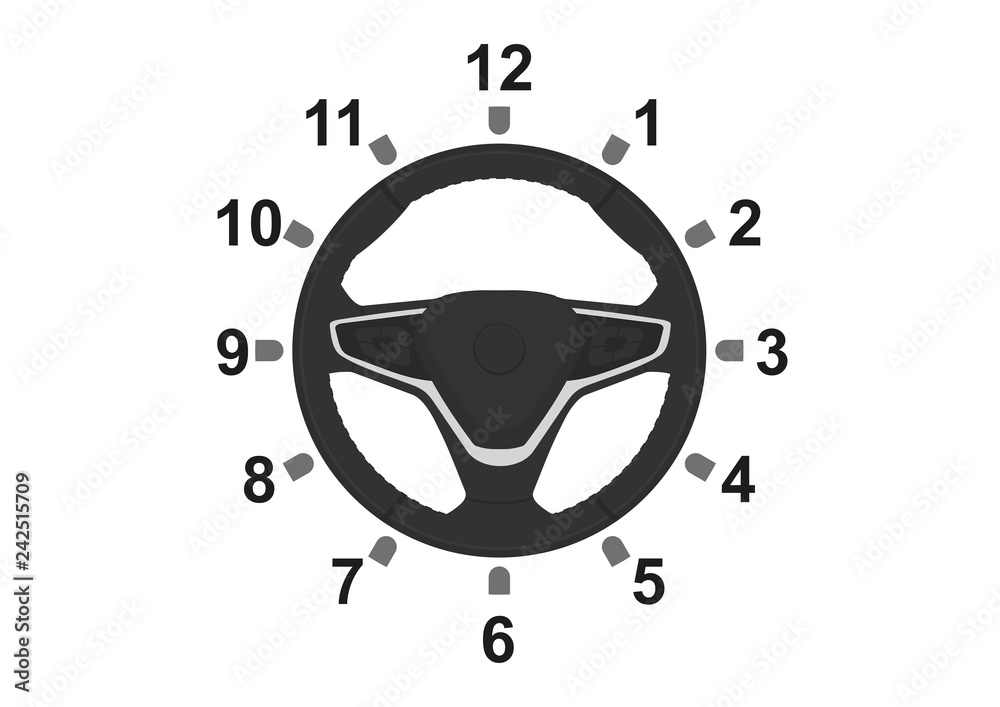Driving ergonomics plays a crucial role in automotive safety and comfort, an often-overlooked aspect that can dramatically enhance a driver’s experience behind the wheel. When you consider the enormity of time spent in vehicles, understanding the nuances of ergonomic practices becomes imperative for both safety and health. Among the myriad of techniques to improve driving posture, the 9 and 3 hand position on the steering wheel stands out as a gold standard. This position not only maximizes control over the vehicle, but also mitigates fatigue and discomfort associated with extended driving.
The essence of optimal hand positioning begins with grip. The 9 and 3 hand placement symbolically represents the hours on a clock, where one hand rests at the 9 o’clock position on the left and the other at 3 o’clock on the right. This configuration fosters a relaxed but firm grip, which is pivotal for maintaining optimal control. Unlike the older paradigm of the 10 and 2 position, which can lead to fatigue and strain, the 9 and 3 stance exhibits numerous ergonomic benefits.
First and foremost, the 9 and 3 position aligns with the natural range of motion of the arms. This alignment not only enhances comfort but also minimizes the risk of repetitive strain injuries. In a world where long commutes have become commonplace, embracing this ergonomic position can mean the difference between discomfort and serenity during a lengthy journey.
Moreover, the 9 and 3 setup affords drivers a greater range of motion, allowing for quick responses to unexpected events. The hands can easily transition between maneuvers—accelerating, braking, and turning—without the stress of awkward wrist angles or the need to reposition hands continually. This preparedness can be crucial during sudden maneuvers or hazardous driving conditions. When the unexpected occurs, having your hands positioned correctly not only aids in reaction time but also promotes confidence behind the wheel.
In addition to enhancing control, the 9 and 3 position can improve visibility. When hands are positioned at these points, the driver’s line of sight is less obstructed by their arms and hands. This visibility is essential for maintaining awareness of the road and surrounding environment, a staple of defensive driving. Every second counts when navigating through congested urban landscapes or rural backroads, where every twist and turn can surprise even the most seasoned driver.
From a safety perspective, the 9 and 3 hand position minimizes the risks associated with airbag deployment. With the development of advanced airbag systems, the potential for injury increases if the driver’s arms are too high on the wheel. By adhering to the 9 and 3 technique, drivers ensure a safety buffer that reduces the likelihood of the bag causing injury upon deployment during a collision.
Lets not forget the psychological benefits of proper steering wheel posture. Comfort and ease can influence a driver’s mental state, allowing for less fatigue and irritability. A relaxed driver is more likely to make sound decisions on the road, fostering a culture of safety among all drivers. When combined with proper seat adjustment and back support, the 9 and 3 position cultivates a holistic approach to driving ergonomics.
But how does one transition to the 9 and 3 position if accustomed to the traditional methods? Gradually implementing this practice can yield significant benefits over time. Start by consciously shifting your grip during short trips, allowing your hands to find the 9 and 3 positions naturally. As these movements become habitual, the body will recognize the benefits and easily adapt to this ergonomic placement.
Aside from hand positioning, it’s crucial to consider the overall driving environment. Proper seat height, back support, and mirror angles should be adjusted to complement the 9 and 3 position. Maintaining an upright posture will enhance visibility while also supporting the natural curvature of the spine—crucial for prolonged periods of driving. Whether you’re maneuvering through bustling city streets or cruising down the highway, a well-integrated ergonomic setup enhances not only comfort but safety.
When embarking on longer road trips, frequent breaks should be a part of the driving strategy. Stopping every couple of hours to stretch and realign body posture ensures that fatigue does not take its toll. This practice, when combined with the 9 and 3 hand positioning, fosters an enduring comfort that transforms long journeys into enjoyable experiences.
In summary, adopting the 9 and 3 hand position on the steering wheel is more than a mere suggestion; it embodies a commitment to driving ergonomics that prioritizes safety, comfort, and awareness. Implementing this technique within the broader context of a well-established ergonomic framework—considering seat and mirror adjustments as well as regular breaks—transforms driving from a mundane necessity into a pleasurable journey. So the next time you get behind the wheel, remember the power of proper positioning and experience the transformative impact it can have on your driving adventures.
